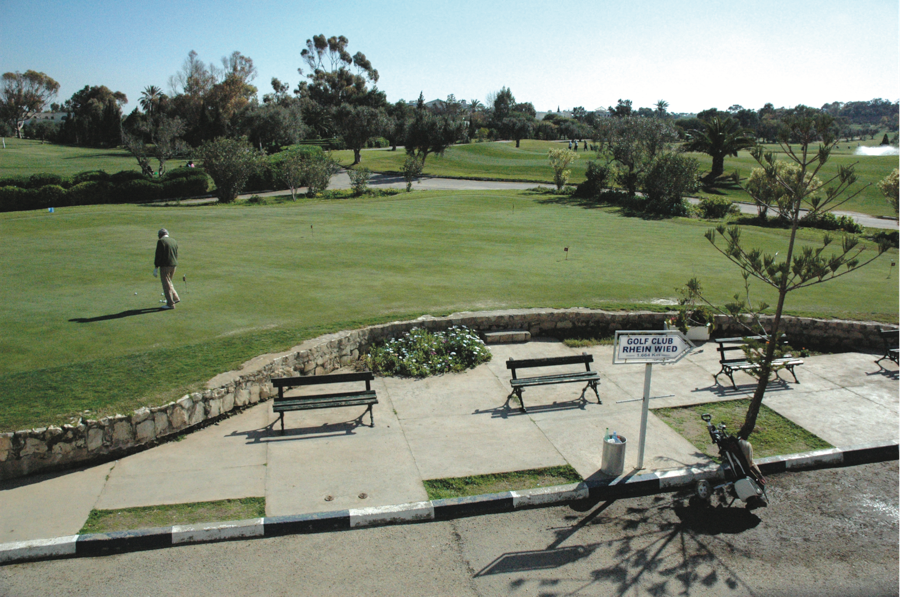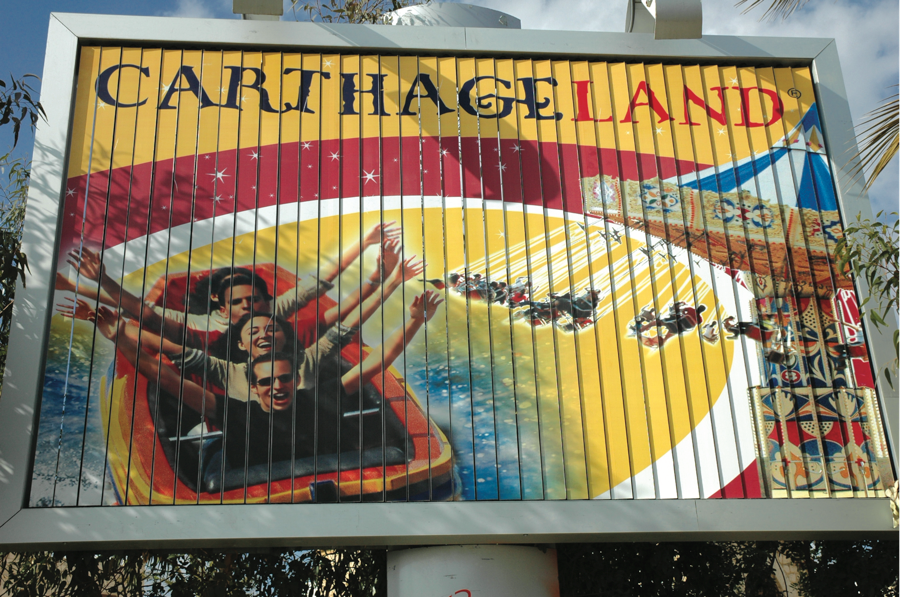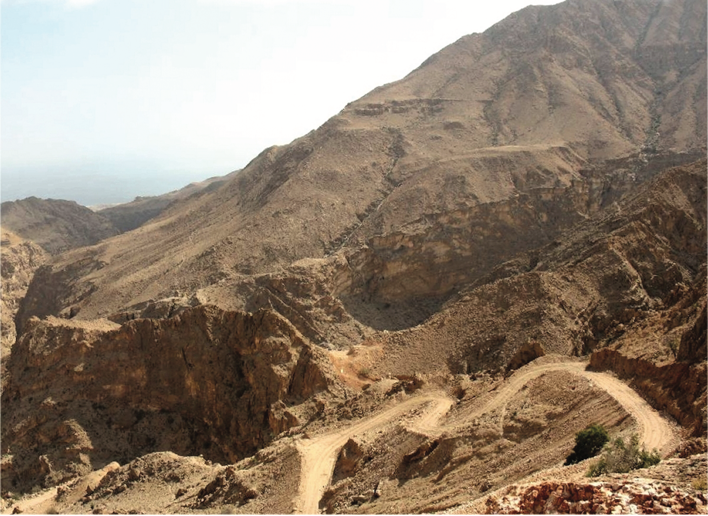Helped by some $20 billion in foreign investments, Tunisia is working on a metamorphosis of both capital and country. The government in Tunis hopes that diversification will be the key to launching the land of former Carthage into the 21st century.
What Cleopatra and the Pyramids are to Egypt, Hannibal and Carthage are to Tunisia. Anything from hotels, restaurants and pharmacists to car rental companies and power plants are named after the general, his family, and the legendary city-state that some 2,500 years ago ruled the western Mediterranean. Carthage still exists, both as a up-market coastal suburb of capital Tunis and as a symbol of former glory. As Tunisia attempts to once again become a gateway between Europe, North Africa and the Arab world, it hopes to revive at least that aspect of ancient Carthage. It has been considerably helped in realizing its dream by some $20 billion worth of foreign investments signed in 2006.
Unlike neighboring Algeria and Libya, Tunisia has only limited hydrocarbon reserves: an estimated 300 million barrels of oil and some 3 trillion cubic feet of gas—the equivalent of about 10% and 5% of Algeria’s proven reserves. The lack of hydrocarbons is the main reason that the country, ever since its independence from France in 1956, has had to look for other sources of foreign currency.
Ever since the 1960s, the country has mainly focused on becoming a tourist destination, an effort in which it has had great success. With a population of some 10 million, the country welcomed some 6.5 million tourists in 2005, far more than any other country in the region. Though Tunisia still aims to increase the number of tourists to 10 million by 2010, economic diversification tops the government’s agenda. The latest round of investments, mainly coming from Italy and the Arab world, concerns almost every sector of the economy, from telecom and industry to real estate and, of course, tourism.
One the most prominent contracts signed in July 2006 was the long-awaited privatization of 35% of the state-owned giant Tunisia Telecom (TT). First announced in 2004, the tender for international bids was not launched until early 2006. Bids came from a multitude of companies, including France Telecom, Vivendi Universal, South Africa’s Mobil Telephone Networks and Emirati firms Etisalat and Tecom. Many experts expected a French company to win, yet it was Tecom’s $1.9 billion offer that proved the highest bid.
Tecom is part of Dubai Holding. Presided by Dubai’s crown prince, Sheikh Mohammed bin Rashid al Maktoum, the company serves as a giant umbrella for dozens of companies involved in fields as diverse as construction, tourism, real estate, media, energy and industry. Dubai Holding made world headlines in recent years by becoming the third-biggest shareholder in DaimlerChrysler. In 2006, it acquired British wax museum chain Tussaud’s, while it is among the names rumored to buy Premiership football club Liverpool.
Less prolific Tunisia Telecom (TT) was a big prize in its own right. With currently some 8000 employees, 3.8 million GSM and 1.3 million fixed line subscribers, it is one of Tunisia’s largest firms. TT enjoyed a state monopoly on telephony until 2002, when Tunisiana, owned by Egyptian Orascom and a Kuwaiti firm, obtained a license to operate. With sharp prices, an aggressive, vibrant marketing campaign and an emphasis on service, the company managed to carve out a 46% market share by the end of 2006. TT could only follow and the price war between the two companies caused the average price of mobile communication to fall some 80%. Consequently, the total numbers of GSM users increased over 10-fold, from some 500,000 in 2002 to some 6.5 million today.
By privatizing the state telecom giant, the government hopes to better cope with Tunisana’s stiff competition and to at least consolidate its current market share of about 54%. One of the main growth opportunities for TT over the next few years will be the large-scale introduction of ADSL. Tunisia’s 11th Development Plan, which runs from 2007 until 2011 aims to boost the country’s broadband capacity to 1 million lines. TT has announced that the first 120,000 lines will be put in place by April 2007. Thanks to the digital revolution, the number of internet users, currently some 1.3 million, will increase significantly.

The new Tunis
Dubai Holding not only ventured into Tunisian telecom. Dubai Holding Properties, the firm’s real estate and construction branch, signed a $10 billion contract to develop Lac du Sud, one of two lakes that separate the capital from the coast. Over the coming decade, the project foresees the construction of a state-of-the-art business tower, residential buildings, hotels and a marina. In fact, Lac du Sud is expected to become the first high-rise area of Tunis.
The development of Lac du Sud follows in the footsteps of the highly successful rehabilitation and development of its twin lake, Lac du Nord. By the mid 1980s, both lakes had becomes so polluted, due to both sewage and industrial waste waters, that the only vegetation that could live in the oxygen-starved waters were thick layers of algae. The tide would start to turn in 1987, when the Société de Promotion du Lac de Tunis (SPLT) was founded.
The task of this semi-private public body was to rehabilitate and develop Lac du Nord. The lake was deepened, cleaned and shrunk from 3,000 to 2,500 hectares, as 500 hectares were reclaimed. The canal that connects the lake to the sea was widened to improve water circulation—anyone visiting the lake today would hardly imagine it was a lifeless pool 15 years ago.
The rehabilitation and development of Lac du Nord not only concerned the water, but also the shore. On a total surface area of 1,300 hectares, so far some 450 hectares have been developed with parks, gardens, residential areas and what is today Tunis’ main business district: les Berges du Lac. While many people originally doubted the area would work, today it is home to many of Tunisia’s leading companies, multinationals and many an embassy, including the brand new American one, which measures some 8,000m2.
In late 2006, Aboukhater, an Emirati property developer, announced it was to construct Tunis Sports City on the shores of Lac du Nord. On a total area of 250 hectares, it will construct a national stadium with a total capacity of 20,000 spectators, nine sports academies, an Olympic swimming pool, tennis courts and a golf course, as well as hospitals, clinics and a 5-star-hotel. In addition, a major part of the project has been reserved for residential development. The total value of the project is $4.5 billion. Seeing the massive developments of both Lac du Nord and Lac du Sud, it is not difficult to imagine that by 2015, Tunis will have quite a different, and indeed spectacular, appearance.
Another major development is Emaar’s “El Qoussour” project. Situated on the coast of Hergla, this mixed tourist-residential resort will consists of 1,300 villas, 3,000 apartments, a golf course, a marina and several hotels. Total surface area measures 442 hectares, some 25% of which will be reserved for parks and gardens. The estimated value is around $4 billion. As far as tourism is concerned, Tunisia in the near future hopes to attract more Arab tourists who thus far have largely ignored the “Europe of Africa.” Some 2 million tourists come from Libya and Algeria, while the remainder mainly stems from Europe. In that sense, it is noteworthy that Emirate Airlines will soon start flying five times a week to Tunis.
But why invest in Tunisia? During a visit to Tunisia, Dubai Holding CEO Mohamed Gargawi Said summed up the following reasons: the country’s favorable business and investment climate, its political stability, its healthy economic growth rate, its human resources and its proximity to Europe. GDP growth rate in Tunisia averaged 4% to 6% in recent years, while the telecom sector grew by some 20% annually. Foreign investors may profit from tax incentives and exemptions, and the country is slated to introduce a free trade zone with the European Union in a matter of years.
Tunisia was the first Mediterranean country to sign a so called “Association Agreement” with the EU on 17 July 1995, which went into force on March 1, 1998. Under the agreement, the EU and Tunisia are committed to cooperate in the field of politics, economics, trade and culture. Most importantly however, the agreement foresees in the establishment of a free trade zone by 2010. It is this particular prospect that makes Tunisia an interesting destination for domestic and foreign companies that aim to export to Europe. It is in this context that the development of the industrial city of Enfidha should be seen.
Covering an area of 2 million m2, the Italian development of Enfidha is part of increasing cooperation efforts between Tunisia and Italy. It aims to construct a fully equipped state of the art office and production area and attract companies that hope to profit from the future EU trade agreement. No doubt, the complex will benefit enormously from the government’s announcement to build a new airport in the direct vicinity of Enfidha, while it is studying the possibility of building a deep sea harbor there. The tender for bids to construct Enfidha airport is expected to be launched in early 2007. The investment’s value amounts to an estimated $450 million.
It’s expected that both Tunisian and foreign companies active in the field of agriculture, technology and exporting will establish themselves in Enfidha, which would provide tens of thousands of necessary jobs by 2010. Currently, Tunisia has an unemployment rate of around 15%.
Enfidha is not the sole Italian investment in Tunisia. Italian Prime Minister Prodi in 2006 announced the construction of a gas-fuelled power plant at Cap Bon, which is to produce 1,200 MW of electricity, 800 MW of which will be exported to Italy, while 400 MW is meant for local consumption. Total value is estimated to amount up to $1 billion. Italy is already connected to Tunisia by means of a pipeline transporting gas via Algeria to Italy.

Still considerable gas reserves
Although Tunisia’s hydrocarbon reserves are dwarfed by those of its neighbors, Algeria and Libya, the country has been an oil producing country in its own right ever since the 1960s. In fact, Tunisia only became a net importer in 2001. While reserves are running out rapidly, Tunisia still has considerable gas reserves, especially offshore. Most reserves are owned and exploited by BG Group, formerly known as British Gas, in cooperation with state-owned ETAP.
In 2007, BG Group is starting the development of the offshore Hasdrubal Field, which holds great potential. In fact, it has so much potential that has signed a deal with Canadian firm Petrofac to construct the $400 million onshore Hasdrubal gas processing and liquefied petroleum gas (LPG) production facility. The factory will be built on the Tunisian coast near the city of Sfax and is due to be operational by 2009.
So while Tunisia tries to make the most of its dwindling hydrocarbon reserves and consolidate its position as the main tourist hub on the North African coast, the government has made a head start with its diversification effort. The industrial city of Enfidha, in combination with the EU free trade agreement, could turn Tunisia into a major trading and production hub as well. Meanwhile, the privatization and liberalization of the telecom sector, including a major boost in broadband Internet will further promote Tunisia as an attractive investment destination.











